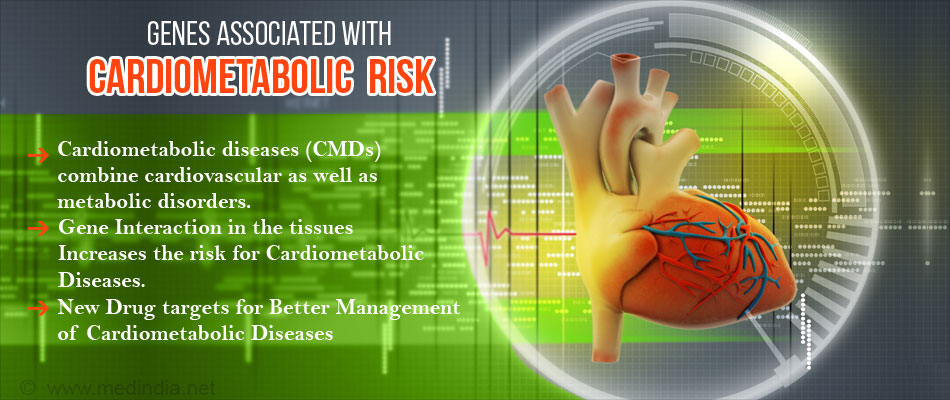
- Genes associated with cardiometabolic disease (CMD) identified
- Interaction of genes influences disease pathways
- More number of drug targets for better care
Studying Risk Factors
It is important to study risk factors and a notable example for this is the Framingham Heart study that has been active for the past 60 years. Currently, the grandchildren of the original study participants are being studied.Such studies provide a wealth of knowledge that is used to
- Identify risk factors
- Frame methodologies that lower the risk for the disease
- Identify intervention strategies
Genome Wide Association Studies (GWAS) Studies
Genome Wide Association Studies (GWAS) have found 755 SNP (single nucleotide polymorphisms) spread over 366 independent loci.Interaction of Genes that Increase the Risk for Cardiometabolic Diseases
Scientists have been able to identify an interaction of genes in the tissues that increase the risk for cardiometabolic diseases including pathways that could lead to stroke or a heart attack.The study is published in the Journal Science and researchers from Icahn School of Medicine at Mount Sinai, the Karolinska Institutet and Science for Life Laboratory (SciLifeLab) in Sweden, AstraZeneca and scientists from Tartu University Hospital in Estonia have collaborated to carry out the research.
Dr. Björkegren then added "Genome-wide association studies (GWAS) have identified thousands of DNA variants increasing risk for common diseases like CAD. However, while GWAS was an important first line of investigations of the genetics of CAD, in order to translate these risk markers into opportunities for new diagnostics and therapies, we must now move into a new phase of discovery and identify the genes perturbed by these DNA variants responsible for driving disease development. Furthermore, we also need to understand in which tissues, pathways, and molecular networks these disease genes are active. Unraveling disease-driving genes with their tissue-belonging, as we have started to achieve using STARNET, will also be a prerequisite for developing precision medicine with individualized diagnostics and therapies."
STARNET
STARTNET was started in 2007 by Dr. Björkegren and Arno Ruusalepp. 600 coronary artery disease patients who required cardiac bypass surgery were included in the study while the clinical samples that were collected were- Blood
- Vascular Tissue
- Metabolic tissue
The gene interaction that exists in various tissue systems is important for understanding the metabolic pathways that lead to the development of disease. Moreover, it provides new drug targets. As Dr. Eric Schadt who is the senior co-author points out "We were not only able to assign a high number of individual genes to DNA markers previously identified by GWAS but also, and quite unexpectedly, we found that many of these downstream genes appeared in disease-causal gene regulatory networks that were shared across tissues and diseases." References
- Genetic Insights into Cardiometabolic Risk Factors - (http://www.ncbi.nlm.nih.gov/pmc/articles/PMC3961996/)
- GWAS as a Driver of Gene Discovery in Cardiometabolic Diseases. - (http://www.ncbi.nlm.nih.gov/pubmed/26596674)










